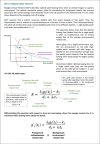Foraging optimally in social neuroscience: computations and methodological considerations
- PMID: 32232360
- PMCID: PMC8343566
- DOI: 10.1093/scan/nsaa037
Foraging optimally in social neuroscience: computations and methodological considerations
Abstract
Research in social neuroscience has increasingly begun to use the tools of computational neuroscience to better understand behaviour. Such approaches have proven fruitful for probing underlying neural mechanisms. However, little attention has been paid to how the structure of experimental tasks relates to real-world decisions, and the problems that brains have evolved to solve. To go significantly beyond current understanding, we must begin to use paradigms and mathematical models from behavioural ecology, which offer insights into the decisions animals must make successfully in order to survive. One highly influential theory-marginal value theorem (MVT)-precisely characterises and provides an optimal solution to a vital foraging decision that most species must make: the patch-leaving problem. Animals must decide when to leave collecting rewards in a current patch (location) and travel somewhere else. We propose that many questions posed in social neuroscience can be approached as patch-leaving problems. A richer understanding of the neural mechanisms underlying social behaviour will be obtained by using MVT. In this 'tools of the trade' article, we outline the patch-leaving problem, the computations of MVT and discuss the application to social neuroscience. Furthermore, we consider the practical challenges and offer solutions for designing paradigms probing patch leaving, both behaviourally and when using neuroimaging techniques.
Keywords: computational neuroscience; marginal value theorem; optimal foraging theory; social neuroscience.
© The Author(s) 2020. Published by Oxford University Press.
Figures




References
-
- Amano, T., Ushiyama, K., Moriguchi, S., Fujita, G., Higuchi, H. (2006). Decision-making in group foragers with incomplete information: test of individual-based model in geese. Ecological Monographs, 76, 601–16.
-
- Amaro, E., Barker, G.J. (2006). Study design in fMRI: basic principles. Brain and Cognition, 60, 220–32. - PubMed

